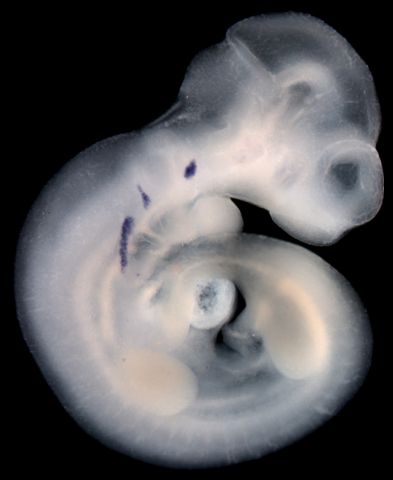Development of viscerosensory Neurons

Placodes are temporary thickenings of the embryonic ectoderm. They form the main tissue source for the development of primary sensory neurons in the head region. So-called epibranchial placodes differentiate into neurons, which, among other things, transmit gustatory stimuli and all viscero-sensory information from internal organs, such as heart and breathing rates and blood pressure. They are therefore components of neuronal circuits for the central regulation of cardiovascular and respiratory functions. The molecular mechanisms underlying the induction of neuronal placodes, the delamination of progenitor cells and the specification of individual neuron types have not yet been fully investigated. We could show that the murine Prospero-like homeobox transcription factor Prox2 is specifically expressed in epibranchial placodes and their ganglion derivatives. Genetic studies in Drosophila and in mice have shown that factors of the Prospero family have important functions in determining cell fate in the nervous system. This suggests similar functions of Prox2 in developing viscerosensory neurons. With the help of Prox2 knock-out mice, which were generated in our group, we are currently investigating the developmental functions of this factor in animal models.
